„AND YET IT MOVES” (2)

The theory of dissonances promised a lot but did not offer the solid bases of a conceptual PARTICIPATIVE foundation for the visual arts and music. Just an endeavor of musical structural exploration was not in off (Schoenberg A. 1931). PARTICIPATION is a spiritual estate that transcends the need for structural control. There is an urge for a thorough knowledge of the phenomenon of CREATION in a reductive and unifying way – in human CONSCIOUSNESS – not only at RECEIVER or PERCEPTIVE level but especially at COGNITIVE-spatial and embodied level. This need was solved by considering PHENOMENOLOGY. Unfortunately, the contact between Bauhaus professors and the domain of PHENOMENOLOGY was merely indirect through the models of simultaneous contrast present in the Gestalt theory and retrieved in the Joseph Albers method of chromatic exploration (Albers J. 1975) or within the graphic and epistemological method of Paul Klee (Hasan Y. 1999; Klee P. 2012). The PHENOMENOLOGICAL metaphysics does not imply the structural mimesis of syncretic musical-chromatic historical and modern theories (Karlsen K. M. 2001). It offers an independent frame of structural thinking that does not work alone, in a speculative manner but is related to the other scientific domains required for the instrumentalization, exploration, and objective capturing of the structural process of visual creation.
At the pedagogical-artistic level, Max Bill continued the utilitarist and collective-lucrative direction initiated by Gropius at Ulm. Here, after Tomas Maldonado took the lead, the modernization and the contact with the economic problems and requirements of production and market will result in the assertion of DESIGN that assimilated the structural theory of Bauhaus professors (Oswald D. 2023).
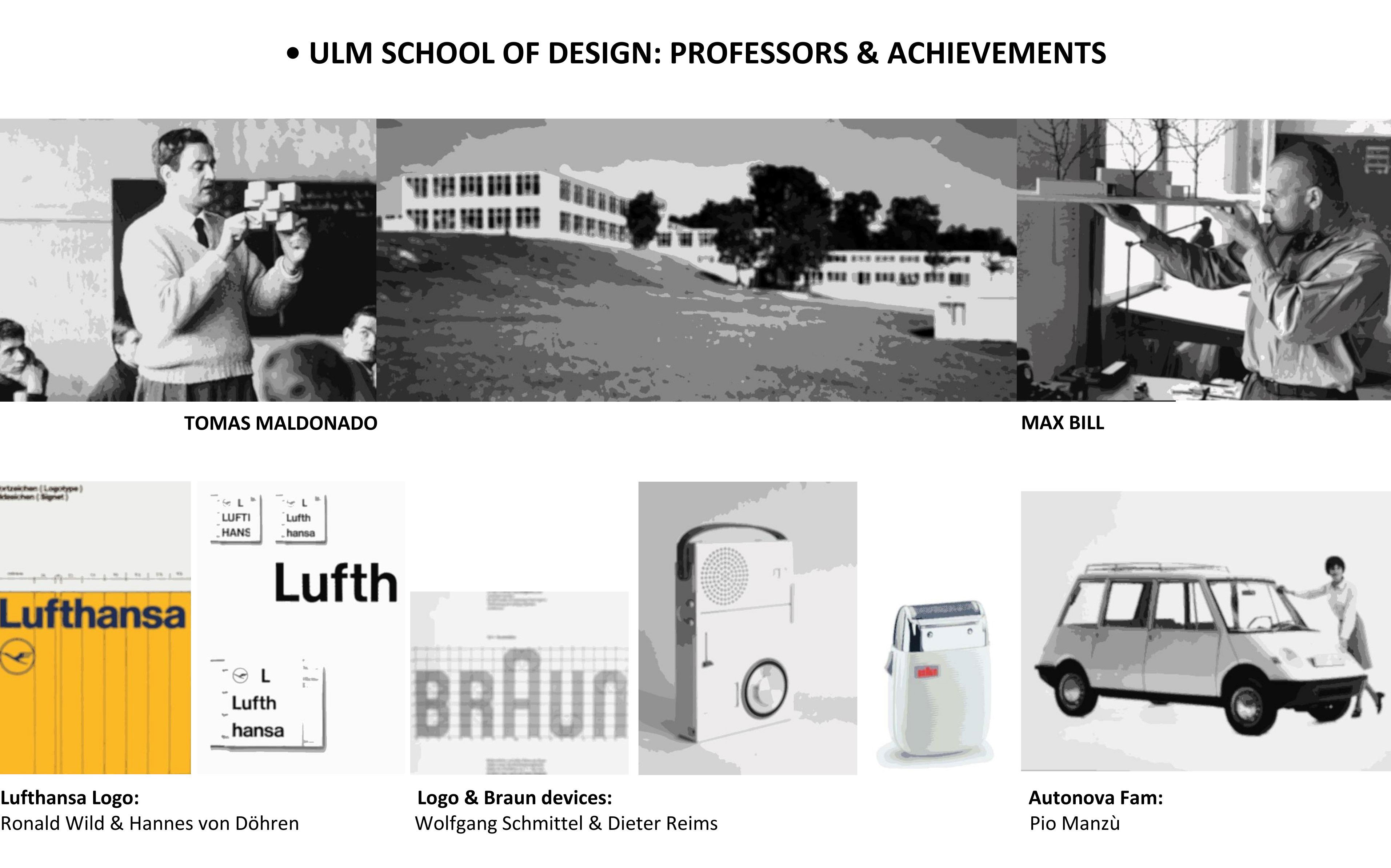
Today, Kandinsky's theory of STRUCTURAL ELEMENTS is at the base of visual-artistic education – including the academic one. It has contributed to the detachment of modern methods of teaching against the representationalist and traditionalist academic thinking, enabling the non-representational thinking - necessary to the unifying and essential relations between background and the center of interest inside the compositional balance (Flondor C. 2005; Șușală I. N. & Petre G. 2009). Despite these, we still consider the compositional landmarks of the working process from an intuitive point of view, ignoring them at a conceptual level and in the participative perspective.
Why can not we integrate the theory of forms and elements in a compositional context? The answer is simple: because they are theoretically defined just as isolated surfaces from the compositional context, that is, by cognitive objectualisation at the level of ventral pathway – of static image visualization (Ayzenberg V. & Behrmann M. 2022; Robert S. 2023) – and not by dynamic compositional contextualization in the perspective of dorsal pathway – of cinematic image visualization (Salekipand S. & Chung Y. H. 2023). At this moment, we understand the isolated surfaces as having a chromatic content generated at RECEIVER level – on the principle of the retinal trichromatic model – and of PERCEPTIVE simultaneous oppositions, and a contour generated at the MOTOR -LUCRATIVE level, as a working trace. The missing thing from this system is the middle part: the decision of space-making based on visual-attentive and categorial principles that give the transition between the PERCEPTIVE and MOTOR-LUCRATIVE levels – that is, between the CONSTRUCTIVE and the MORPHOLOGICAL compositional levels. The notions of form and element must integrate into a DINAMIC-IMPLICITE context, not just considered as geometrical primitive, compositionally isolated, and manifested in the brain activity by recognizing and representing individual surfaces (Biederman I. 1987).
Working decisions by compositional spatialization of the structural properties implies a unifying contextual thinking, or an APODICTICAL one, apparently opposed to the usual pedagogical methods of CREATIVE variety, based on the combination of isolated constructive components. Despite this, the apparent restriction of unifying structural organization involves CREATIVITY as topological freedom of modeling and – inside the aporetical moment of discontinuity between reduction and participation – as spontaneous EMERGENCE of solving structural relations. Thus, the morphological model – although illustrating the colinearity of the route of his components – does not mandatorily imply his rectilinearity.

By difference, the creative EMERGENCE has no model because it extends the need for pure structural essentialization over the social-semantic context of the visual creation process. The multiple transformations and retouches that accompany the struggle inside the creation of the work of art in the activity of great masters indicate the EMERGENCE with all their self-contesting and certitudes. Of course, the creative EMERGENCE obtained by the individual gestural spontaneity of the author and the freshness of relational solving is also valid in the intuitive-inspirational context of the ”alla prima” method.
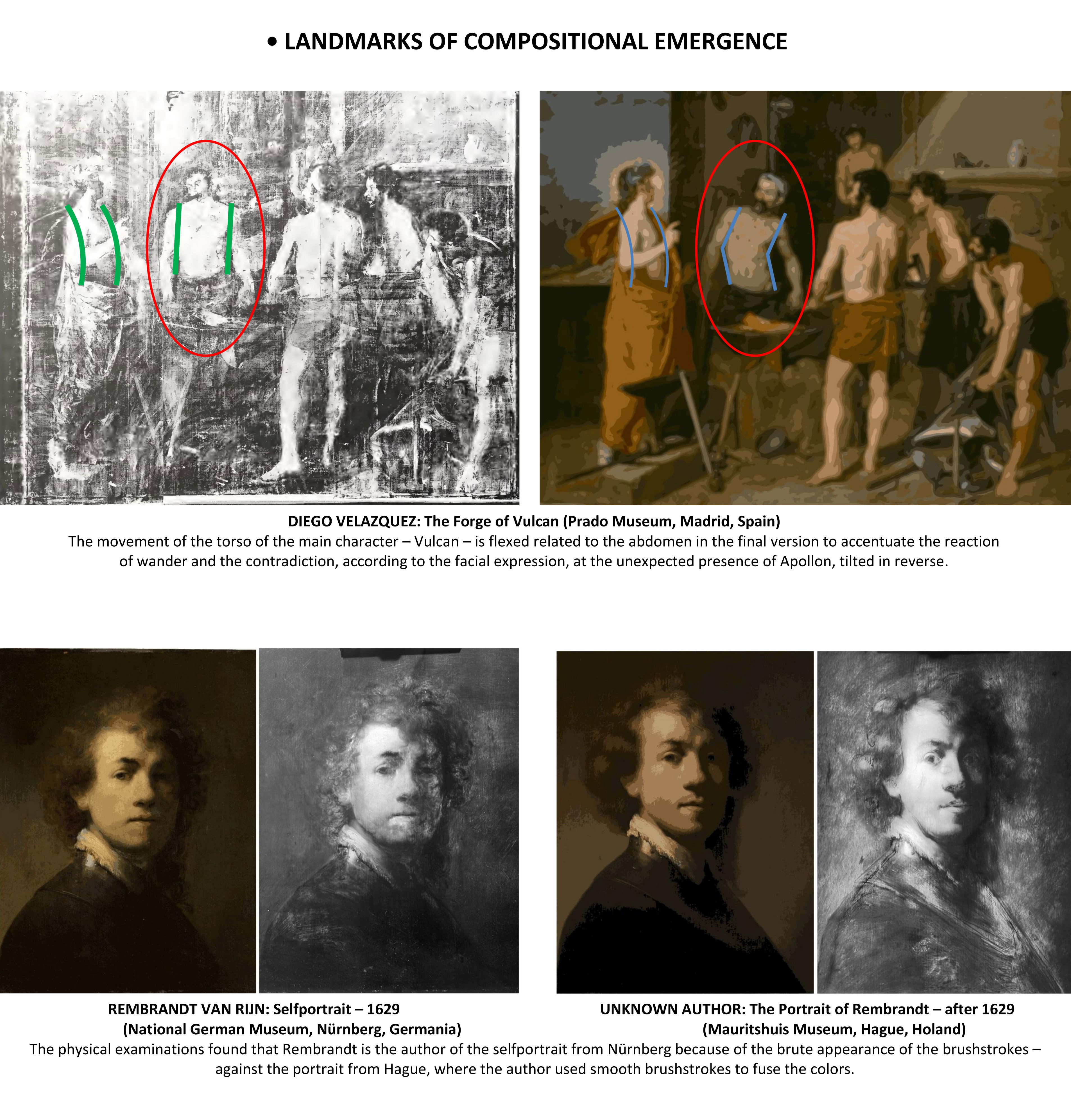
The TOPOLOGIC-ATTENTIVE compositional organization has a COVERT nature because it doesn’t imply ample ocular movements and an ENDOGEN nature of SELECTIVE ATTENTION (Sani I. 2021). It means that the discovery, the focalization, and the following of different constructive components of surfaces are achieved by conscious and voluntary pre-setting, searching, and identifying the morphological model, retrieved as an attentive module that builds and breaks down the MAP of juxtaposed surfaces. Even though it seems like a complicated approach, the attentive principle of MORPHOLOGICAL TOPOLOGY is the only natural way to address visually the compositional structure. It is in line with the striate cortico-neural structure and with the assimilation and organization of information at the level of primary visual area V1 – which facilitates the processing of constructive components with a high degree of COLINEARITY, VICINITY, and SYMMETRIZATION – and in line with the V5 area – that opens the dorsal pathway, of spatial-dynamic contextualization, causing the effect od IMPLIED MOTION, or SENSE, in the visualization of static images (EXPO 2-PROPRIETĂȚI). Therefore, because of the colinear nature of the route of spatial development for the surfaces that assemble as components of the morphological model, the visual FORM is mono-dimensional and modular despite the geometric bi-dimensionality of the mapped individual surfaces. However, as morphological components, the surfaces do not have an absolute geometrical dimension, like the geometrical Euclidean isolated elements, but a RELATIVE one related to the morpho-compositional dynamic context.
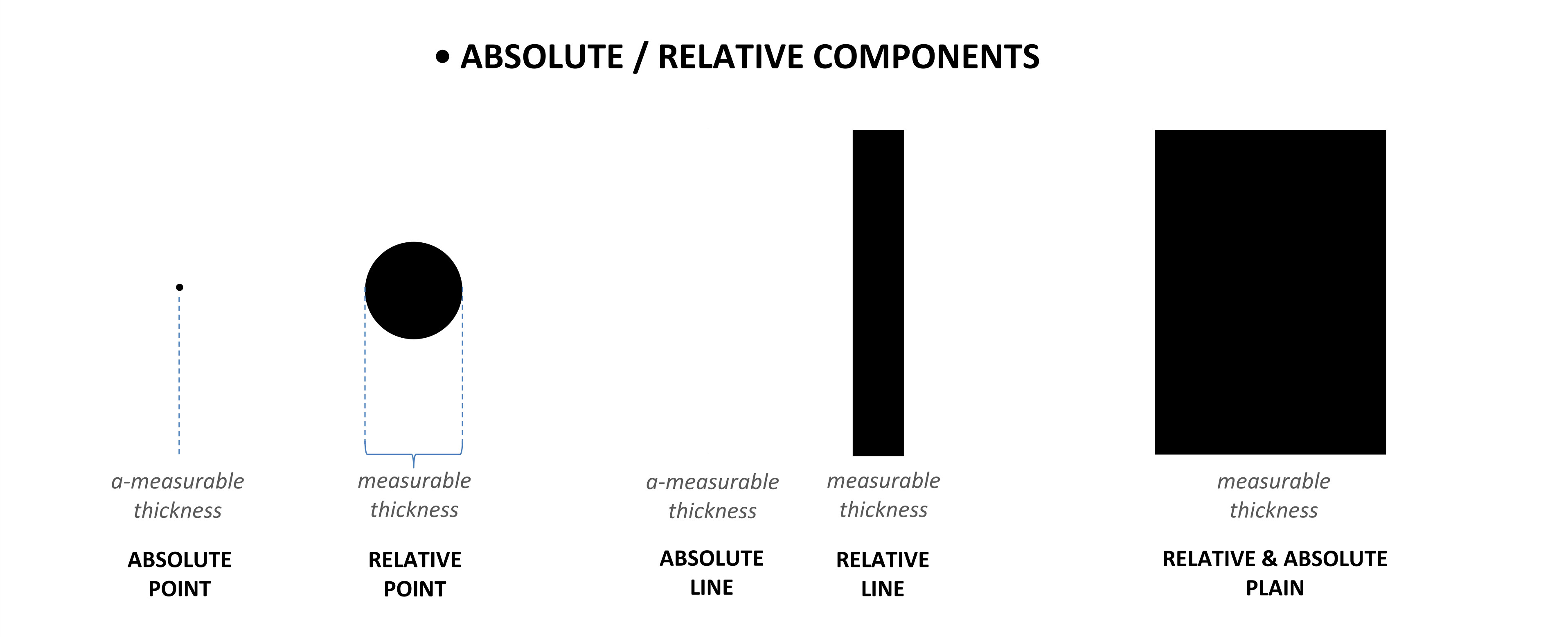
Kandinsky uses the notion of RELATIVITY in various theoretical contexts but never clarifies it decisively (Kandinsky V. 1926; Kandinsky V. 1921). The RELATIVE DIMESIONALISATION of surfaces requires a redefining of the notion of STRUCTURAL ELEMENT in the visual artistic composition from the point of view of:
• IMPLICIT DYNAMICS of surface modeling (feature presented in the current text);
• ATTENTIVE-MATEMATICAL TOPOLOGY of compositional surfaces (a feature I will present in EXPO 3).
The IMPLICIT DYNAMICS of surface shaping require a synthetic-mathematical or NON-PARAMETRICAL approach of quantities that describe the properties of constructive components according to the following principles:
• The OBSERVATIONAL foundation of quantitative-synthetic expression is opposed to the logical and analytic one;
• Synthetic assimilation of properties and their relations at the COGNITIVE-CATEGORIAL level as opposed to the analytic one – replicative and processed at the SENSORIAL and PERCEPTIVE level;
• DYNAMIC dimensionalization of surfaces is RELATIVE to the compositional context against the absolute and geometric one – without omitting the geometric dimensions of surface components);
• The quantitative-synthetic operationalization of RELATIVE DIMENSIONS is COMPARATIVE and is expressed by VECTORS of sense applied on the limits of surfaces.
Considering the synthetic principles, I renounced the methods of DIMENSIONAL RELATIVISATION by TRANSFORMATION, SCALAR-FRACTALIC MODULARIZATION, and GRAPHS. They presented difficulties in the OBSERVATIONAL COMPARATION of quantities and the identification of ELEMENTARY-DIMENTIONAL CATEGORIES inside the compositional context of surfaces. You can find the presentation of the rejected methods and the impediments encountered in their application as models and instruments of DIMENSIONALIZATION in the APPENDIX of this chapter (EXPO 2-TOPOLOGY-APPENDIX), after the applicative presentation of dynamic morphology (EXPO 2-TOPOLOGY-APPLICATIONS). After the selection of RELATIVIZATION methods, the following procedures of compositional modeling came in:
• DECONSTRUCTION or disablement of concave surfaces by IMAGINARY limits in a minimum of convex surfaces, starting from their REAL limits;

• The RELATIVE-DIMENSIONAL contextualization of juxtaposed surfaces through the correspondence between elementary categories and constructive components of surfaces such as: • The content is a relative bi-dimensional plane; • The contour is linear and relatively mono-dimensional; • The isolated components are relatively a-dimensional points.

The model of RELATIVE-DIMENSIONAL contextualization had a problem – it didn’t say how we can establish univocally the elementary categories of surfaces when applied to an aleatory map of juxtaposed surfaces. This impediment persisted due to the literary assertion of quantitative comparison between contents by the notions of DOMINANT-RECESIVE, which confused. Due to the DYNAMIC nature of RELATIVE DIMENSIONS and elementary categorization of surfaces, the proper way to indicate quantitative comparison was directly by the vectorial sens assigned to distance variations between the limits of surfaces in their local morphological context.
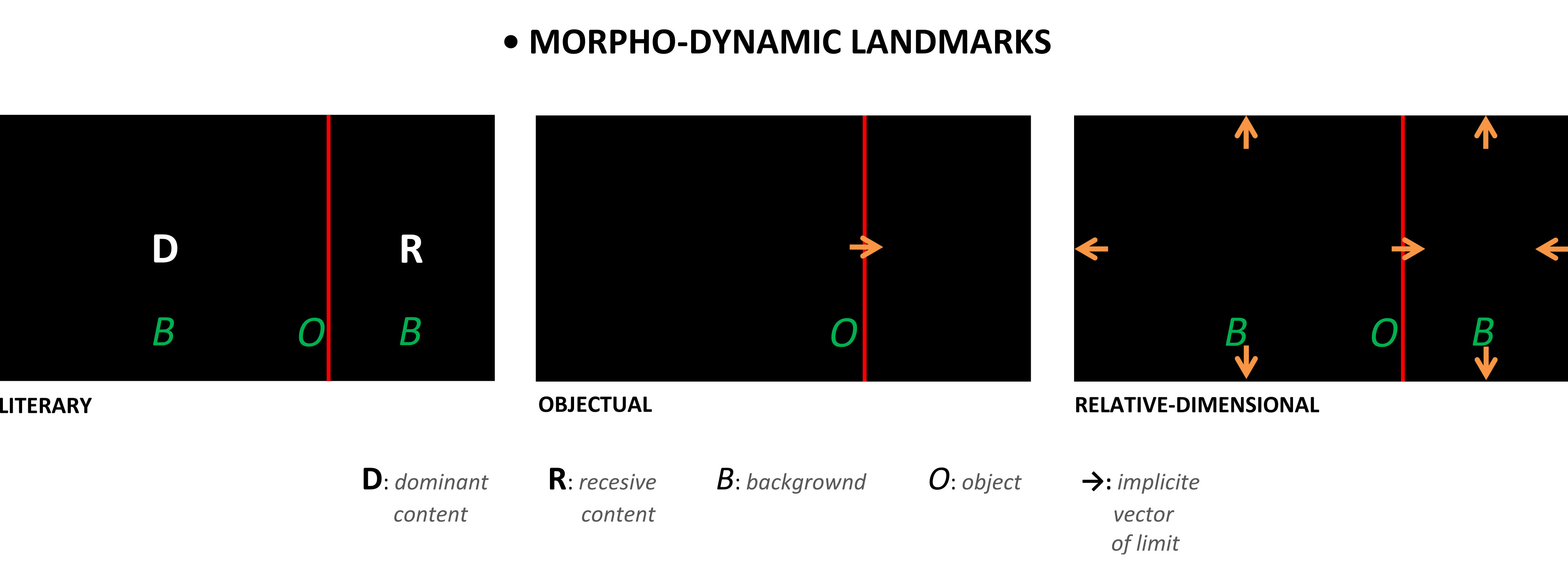
Also, for modeling the dynamic-dimensional trend, I established certain conventions of vectorial sens, depending on the character of limits and their vicinity:
1) The EXTERIOR and REAL limits of the support manifest reciprocal dynamics, just next to nearby INTERIOR and REAL limits;
2) The INTERIOR and REAL limits are not reciprocal between them and neither next to the IMAGINARY ones in general; 3) The IMAGINARY limits are not reciprocal between them;
4) The EXTERIOR opposed limits have a reciprocal sense of moving away from one to other, regardless of the length of support sides;
5) The EXTERIOR and IMAGINARY limits are not reciprocal next to REAL or IMAGINARY nearby limits and follow the conventional reciprocal remoteness of REAL support sides.

The model of DECONSTRUCTION, obtained by IMAGINARY limits in direct extension of the REAL ones of the surface, offers the possibility of an applicational approach for all kinds of surfaces in the perspective of ITERATIVE development of composed forms. The most easy to organize are the rectilinear and rectangular, or STRIGHT surfaces, compatible with the colinearity and mono-dimensionality of the morphological model. By combining the sense of the vectors attached to the four sights of a conventional square, after the simplification of rotations, the result consisted of six categories of ELEMENTARY DIMENSIONAL RELATIVIZATION:
• Three principal ones: the POINT (with all sights closed), the LINE (with two opposed close sights and two remoted sights), and the PLANE (with all sights remoted);
• Three secondary or intermediary ones: the POINT-PLANE (with two nearby close sights and two nearby remoted sights), the POINT-LINE (with two opposed close sights with identical sense), and the LINE-PLANE (with two opposed remoted sights and the other two opposed sights identical as sense).

We apply the vectors of RELATIVE DIMENSIONALIZATION to the morphological model of composition. This results in new co-descending models, from simple to complex structures. They include the following constructive landmarks: • REAL LIMITS of support and morphological objects; • MEDIANS of support and its included forms; • IMAGINARY LIMITS resulted from the intersection between the REAL LIMITS of the object and the MEDIAN of support or the object (we don’t have IMAGINARY limits in the extension of REAL ones because the concave surfaces are missing). Also, we consider that: • DISTINCT LIMITS consist in the absence of intersection between the limits of the object with the MEDIAN of the form; • INTERSECTED LIMITS consist of an intersection between the limits of the object with the MEDIAN of the form; • COMPLEMENTARY LIMITS consist of two relative perpendicular limits, both orthogonal directions and oblique ones that belong to orthogonal ones.
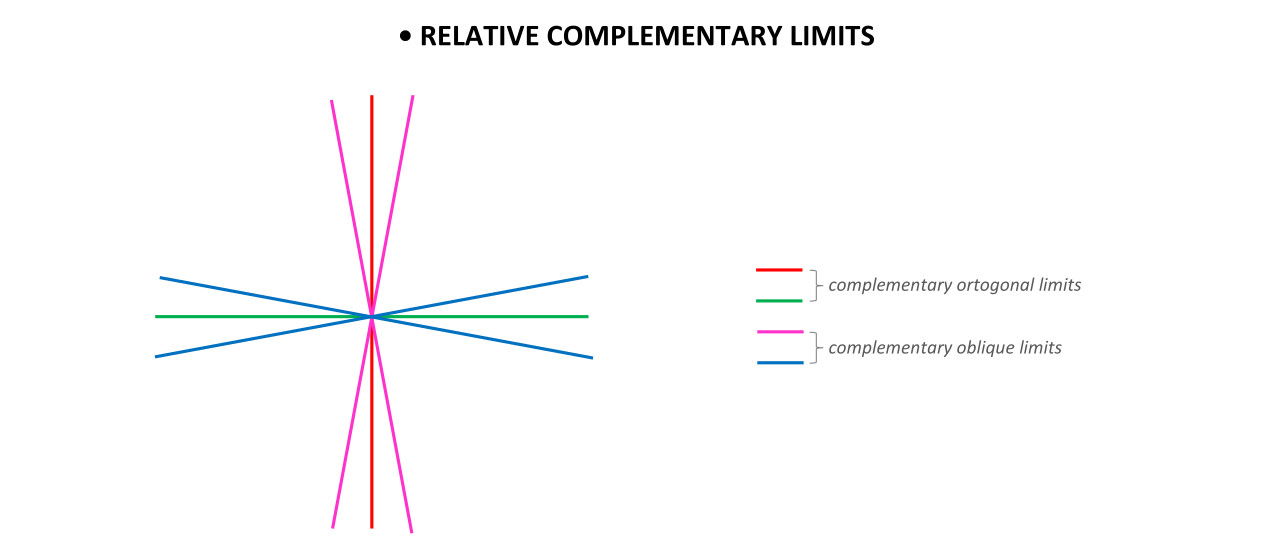
Thus, this results in the following hierarchy of co-descendent morphological models by reference to the object as:
• UNIQUE STRAIGHT LIMIT – equivalent with the UNIQUE OBLIQUE DISTINCT LIMIT from which results the UNIQUE OBLIQUE INTERSECTED LIMIT by over flooring the cases of UNIQUE OBLIQUE INTERSECTED LIMIT ON SIGHTS of the support;

• DOUBLE STRAIGHT LIMITS
– equivalent with the DOUBLE OBLIQUE DISTINCT LIMITS from which results the MIXTED DOUBLE LIMITS with INTERSECTED OBLIQUE by over flooring the cases of UNIQUE OBLIQUE INTERSECTED LIMIT ON SIGHTS of the support;
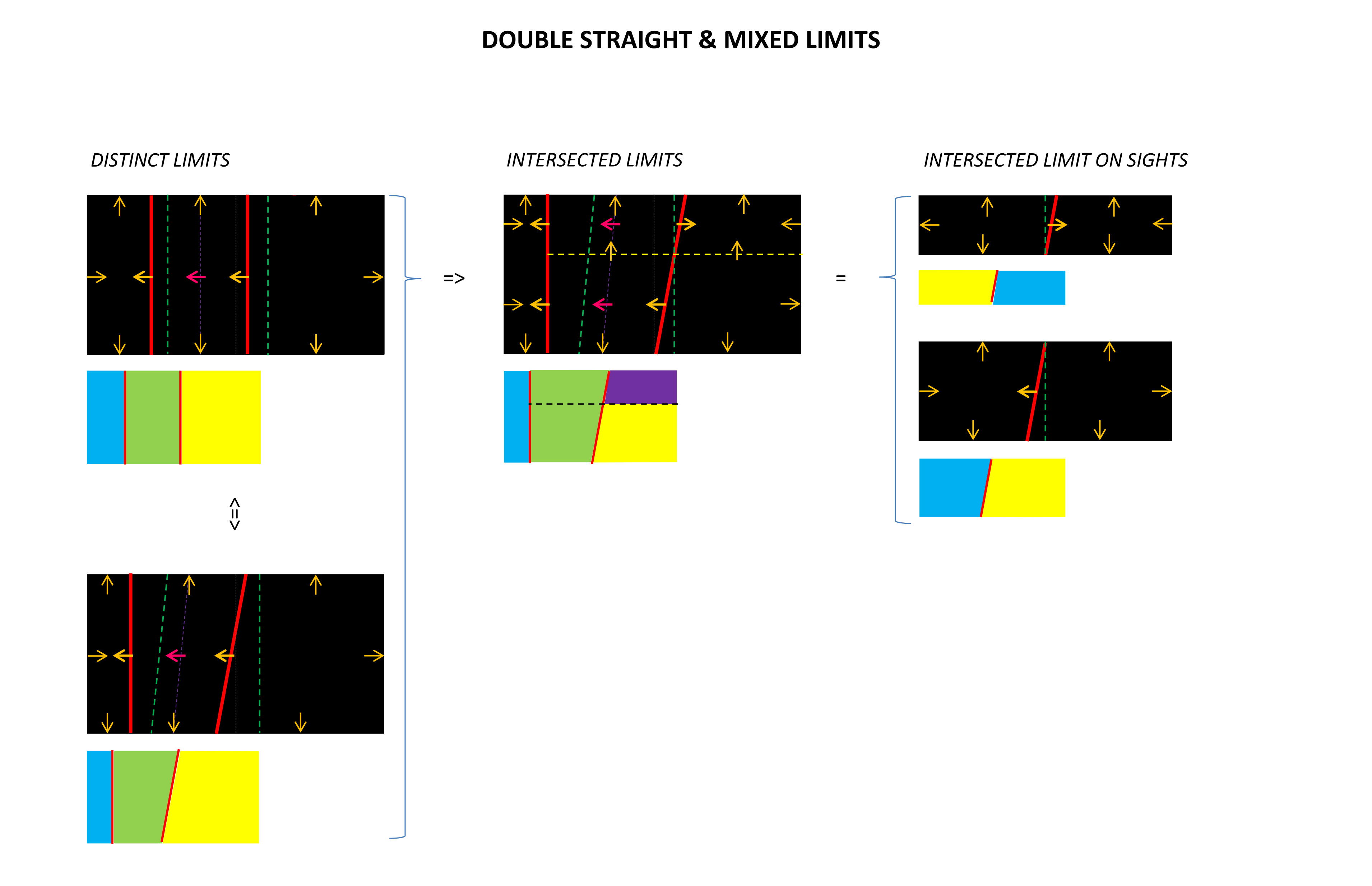
– equivalent with the DOUBLE OBLIQUE DISTINCT LIMITS from which results the DOUBLE OBLIQUE INTERSECTED LIMITS by over flooring the cases of DOUBLE OBLIQUE INTERSECTED LIMITS ON SIGHTS of the support;
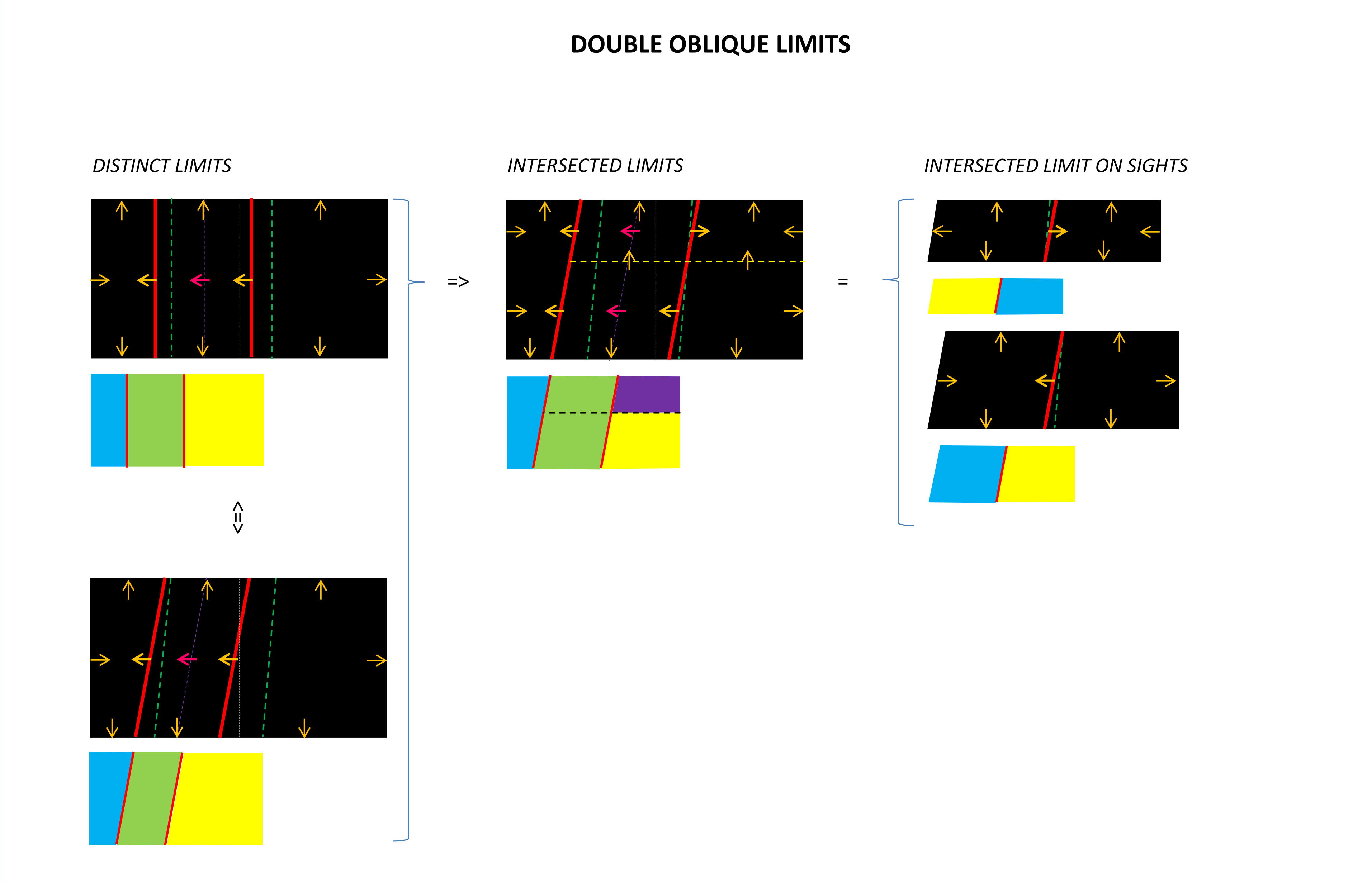
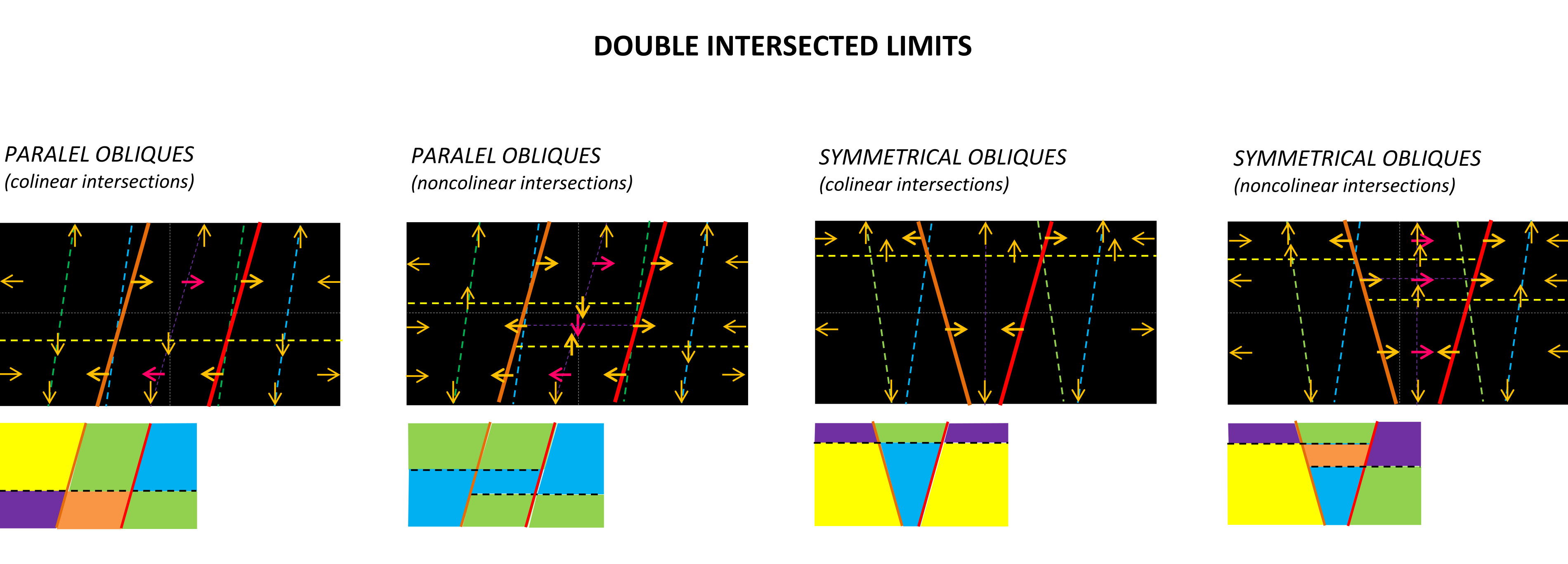
• CONTINOUS DOUBLE STRAIGHT COMPLEMENTARY DISTINCT LIMITS
– equivalent with the CONTINOUS MIXED DOUBLE STREIGHT COMPLEMENTARY DISTINCT LIMITS from which results the CONTINUOUS MIXTED DOUBLE LIMITS with the COMPLEMENTARY OBLIQUE INTERSECTED LIMIT by over flooring the cases of UNIQUE OBLIQUE INTERSECTED LIMIT;
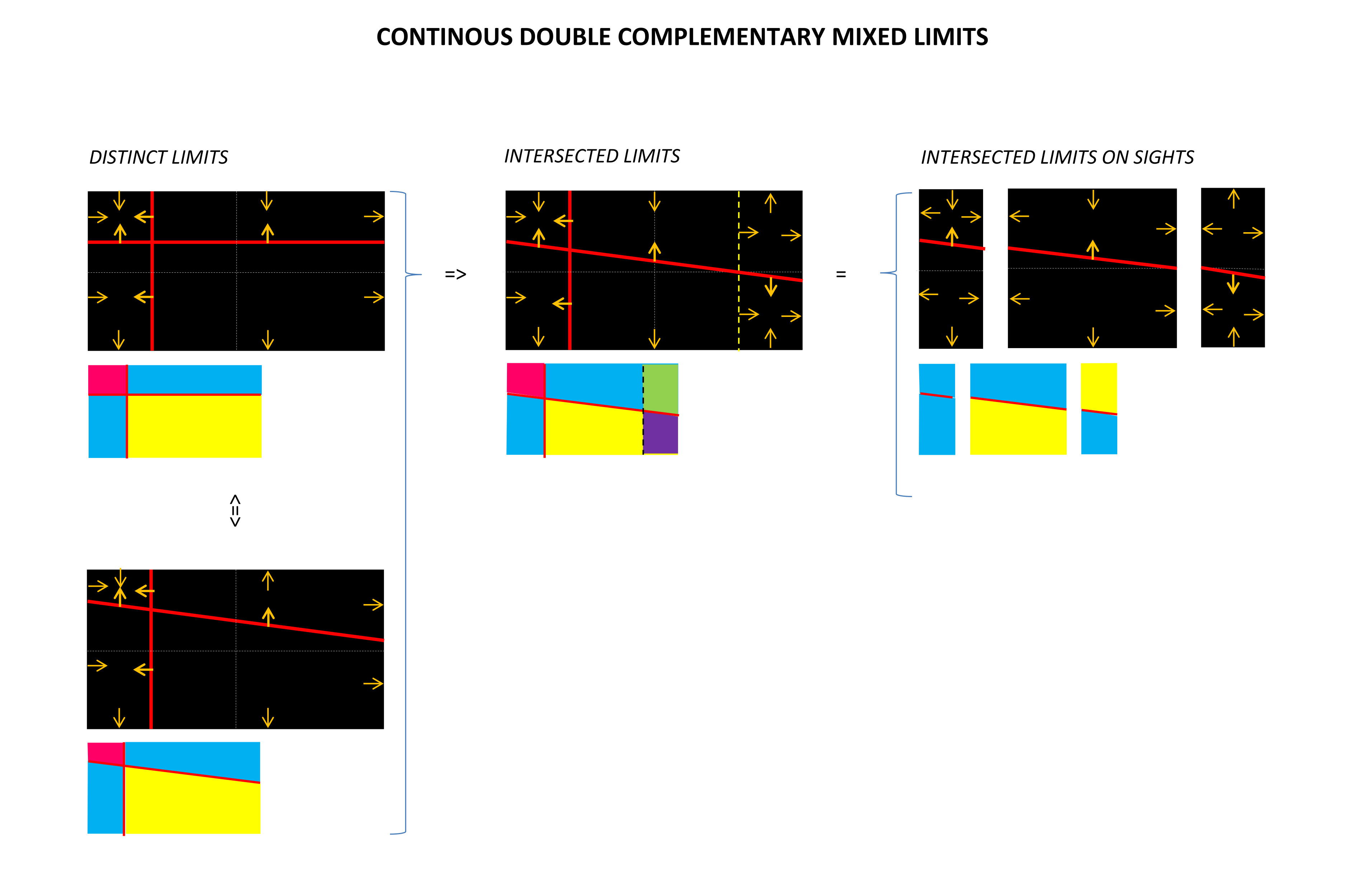
– equivalent with the CONTINUOUS DOUBLE OBLIQUE COMPLEMENTARY DISTINCT LIMITS from which results the CONTINUOUS DOUBLE OBLIQUE with both COMPLEMENTARY INTERSECTED by over flooring the cases of UNIQUE OBLIQUE INTERSECTED LIMIT.

Finally:
• All cases of distinction are equivalent among themselves;
• All cases of intersection deconstructed as cases of intersection on the sight of the support.
The elementary categories of implicit-dynamic relativization of compositional surfaces are the first step towards the transition between the constructive levels of structure development and the morphological components of an attentive nature. They imply both the constructive components of juxtaposed surfaces of the map and their implicit dynamization by vectors of an attentive visual nature. Applying this analytical method, we will succeed in solving together the simple problem of identifying the center of interest and more complex challenges as well as their hierarchy and the iteration of their surfaces – attentively selected in the complex composition of static images where the FORM is yet moving…